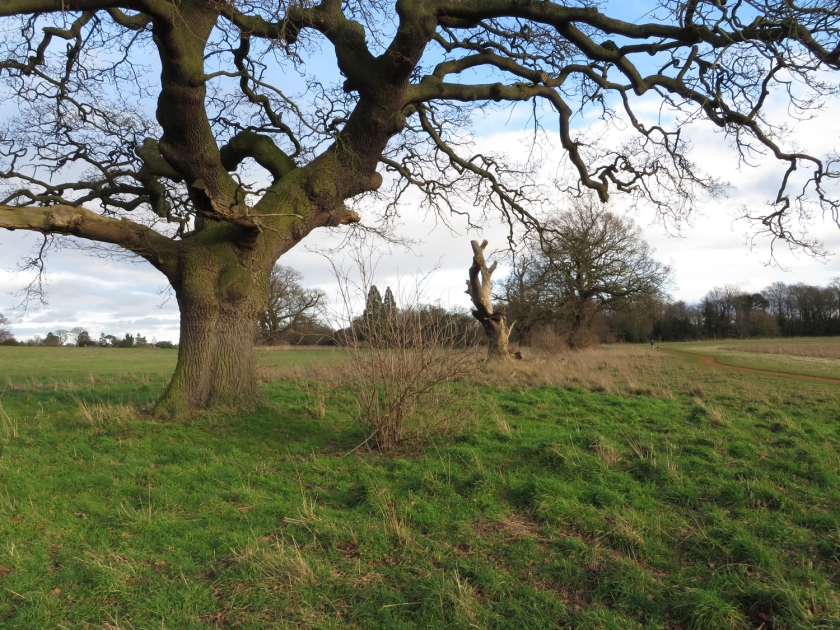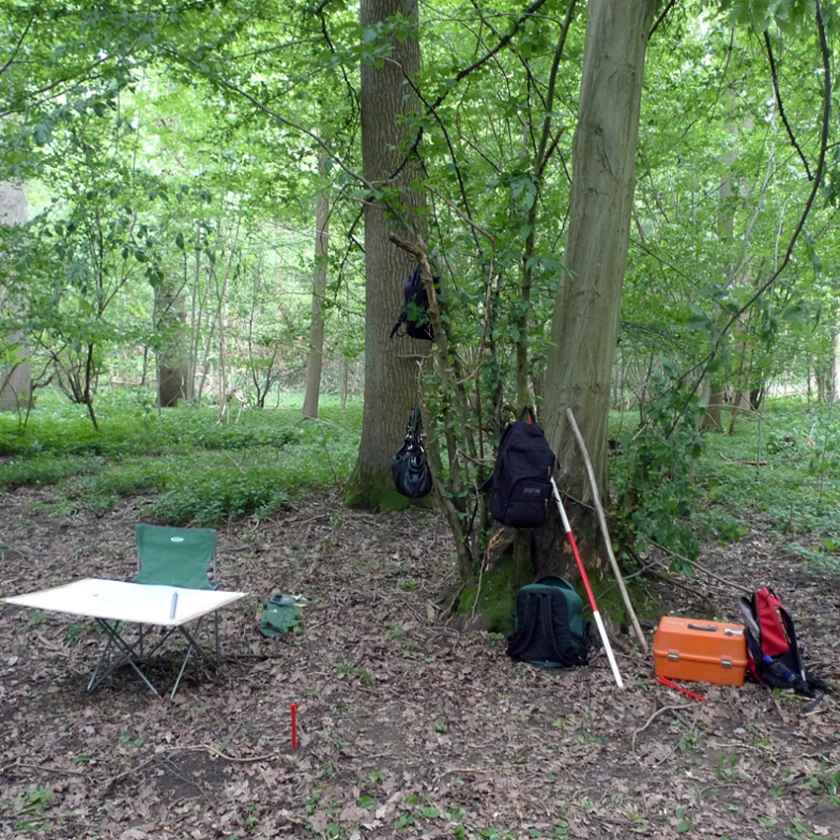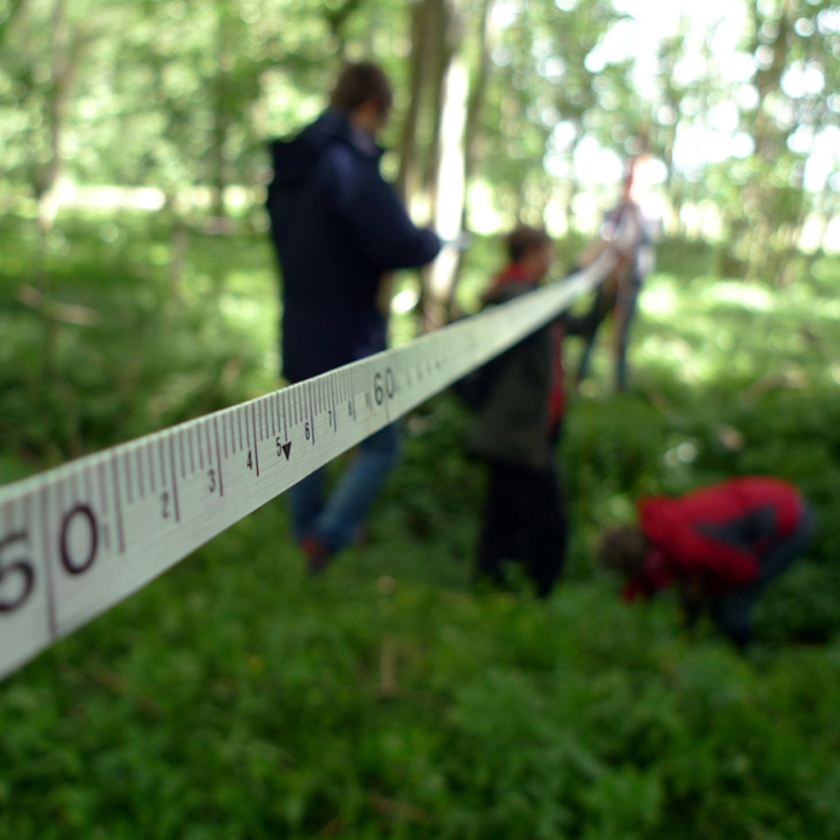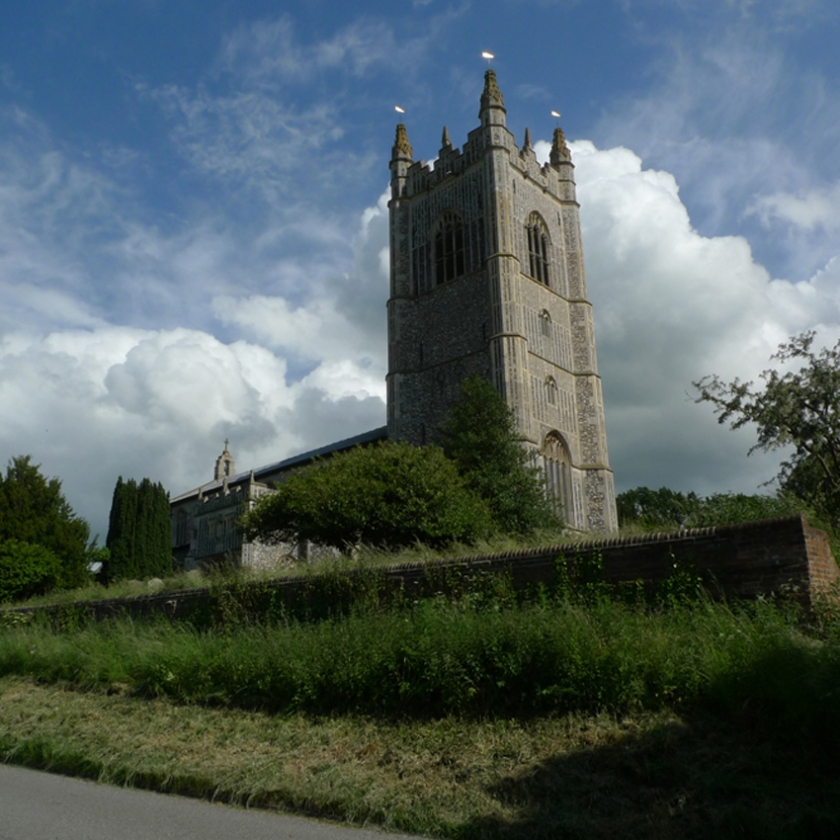Our first post-Christmas field trip was a short one – out to the north of Norwich to Catton Park, Humphry Repton’s first commission as a landscape designer. Catton is an excellent example of the type of small, semi-urban parks which proliferated around towns and cities such as Norwich in the late eighteenth and early nineteenth centuries, as can be seen here on Faden’s map of Norfolk. The lines of old oak trees in parts of the park provide hints of the former fields which were thrown together create it.


A return visit to Hockering, where we spent some time surveying the wood with our third-year fieldwork course in summer 2013. It all looked rather different on a cold January day as we followed the boundary of the wood and explored the remnants of a former deer park on the parish boundary between Hockering and East Tuddenham.

Our second year students began the spring semester with an introduction to medieval landscapes and buildings, including sessions on the architecture of the parish church. With Norwich on our doorstep it seemed a much better idea to spend time in the city rather than in the seminar room. Starting out under the impressive tower of St Giles we headed off on a miniature odyssey of Norwich churches – some open, some closed and some put to new uses. We looked at the churches of St Benedict (just a tower since 1942), St Swithin (now Norwich Arts Centre), St Margaret, St Lawrence, St Gregory (home to impressive medieval wall painitngs and an antiques market), St John Maddermarket, St Andrew, St Peter Hungate and finally St George Tombland where we were given an impromptu and very interesting tour by the verger.

As Spring started to spring our third years carried on their Grand Tour of East Anglian parks and gardens with a visit to Wolterton. Lying immediately to the north of Blickling, Wolterton Hall was designed by Thomas Ripley, with the design of the surrounding landscape attributed to Charles Bridgeman with later additions by William Sawrey Gilpin.


Reactions vary when we inform our second year students that we will be going to Thetford for a field trip. For students heading toward Norwich from various parts of the country Thetford is somewhere glimpsed from car or train windows, a name on road signs seen while contemplating whether or not the A11 does in fact go on forever. However, a sunny morning spent scaling the motte of the Norman castle, studying the ruins of the Cluniac Priory and exploring the timber-framed Ancient House meant that most went home with a more favourable perception. We also managed to catch the Lost Tudor Sculptures exhibition, part of the Representing Reformation project.


Part two to follow…




















































